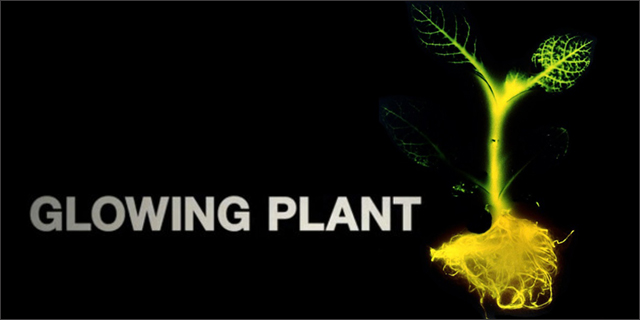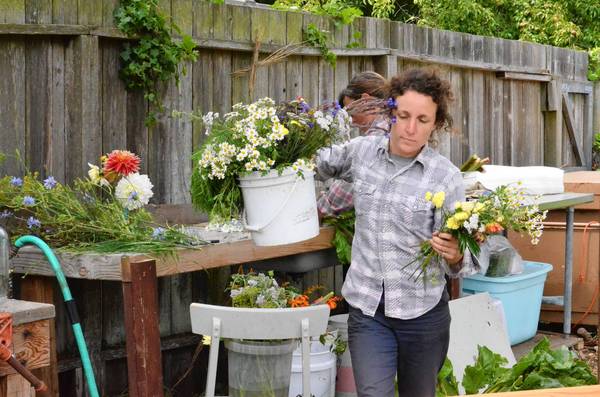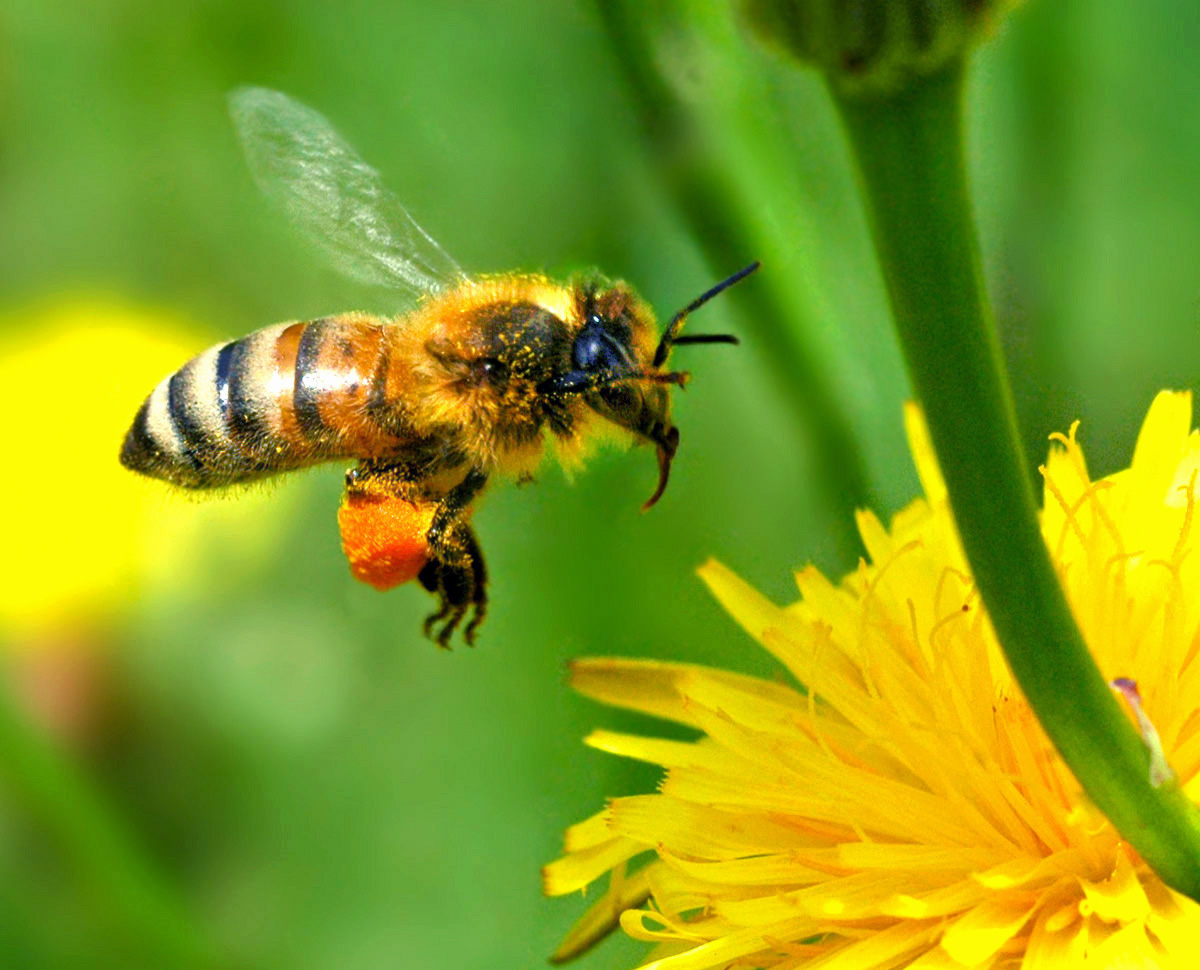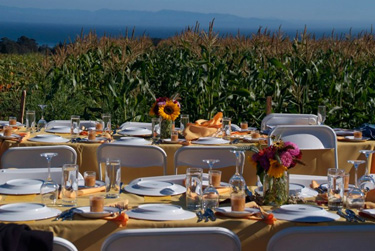 Read the original story from the Washington Post
Read the original story from the Washington Post
Hunkered down in a converted shipping container stationed in a San Francisco parking lot, three young entrepreneurs are tinkering with the DNA of ordinary plants in the hopes of being able to mass produce a variety that glows in the dark.
If all goes well, their start-up company will begin mailing out the first batch of seeds next spring to the 8,000 donors across the country who helped them raise nearly $500,000 in a phenomenally successful online fundraising campaign through Kickstarter.
The distribution of an estimated 600,000 seeds would be, by far, the largest release of a synthetically engineered organism to the general public. The recipients will be able to plant the seeds in any standard flower pot and, with enough light and water, grow a glowing version of a small winter annual with oval-shaped leaves that is related to mustard.
It is an event that supporters are looking forward to with giddy excitement but also one that has sparked worry in Washington about whether existing laws and statutes are adequate if something goes wrong and the seeds upset the balance of the environment.
The team is confident they can grow a plant that gives off light — scientists have been able to create glowing plants as far back as in the 1980s. What they don’t know yet is how bright they can make it. They plan to announce Friday that they have successfully created an early prototype of glowing seeds.
For Antony Evans and his colleagues, the experiment represents the first step toward the ultimate goal of creating sustainable natural lighting. They imagine a world where light bulbs are filled with DNA from fireflies and jellyfish and bioluminescent trees replace streetlights.
“Our project is a demonstration of what’s possible,” said Evans, 33, who has an MBA and is the Glowing Plant Project’s manager.
A generation ago, the process of manipulating an organism’s genes required millions of dollars in sophisticated equipment and years of trial and error. Now it can be done in a garage with secondhand parts ordered off the Internet in a few days. Thanks to advances in computational power, the cost of reading 1 million base pairs of DNA (the human genome has approximately 3 billion pairs) has fallen from upwards of $100,000 to a mere 6 cents.
That has allowed entrepreneurs to enter the field with minimal investment. The team, keeping their exact location a secret because of worries about activists potentially destroying their work, is starting its first experiments this month on hundreds of seedlings lined up on tables in their makeshift lab.
The team is not looking to reinvent the wheel. Working off previously published papers, they have decided to take genes from a bioluminescent marine bacterium and insert it into seedlings of a small flowering plant that’s known as Arabidopsis.
The process of creating the glowing plant, as the team describes it, is simple: They input the DNA sequences from the bacterium into a computer and a program modifies the DNA sequence to make it work in plants. The team then e-mails the file containing the sequence of letters (G, T, C, A) to a company in China, wires $8,000, and a few weeks later they get in the mail the DNA, synthesized by Chinese technicians. They then take the DNA and use a machine called a gene gun — because it’s earliest version was a modified air pistol — to insert it into the plant.
The challenge, according to Evans, is trying to figure out how to make the plant brighter. Is it the gene expression? The oxygen? The amount of sunlight? Earlier experiments produced plants that were so dim the light could be seen only in completely blacked-out rooms.
“We’re not expecting extremely bright. We’re aiming glow-in-the-dark, stars-on-the-ceiling-type light. The first batch is not going to replace your bedroom light, but in the longer term that’s the goal,” Evans said.
That kind of future thinking was why the Glowing Plant Project’s Kickstarter fundraising campaign, which officially began in April, was wildly popular from the start. While the company had hoped to raise a modest $65,000, it brought in $484,013 in just 44 days. A typical comment from a donor: “My dreams of having a greenhouse rose garden/glowing Avatar-like wonderland will soon be realized!”
The project soon ran into trouble, however. Deeming it “a new biotech threat coming from Silicon Valley,” the environmental watchdog ETC Group started an online petition calling on Kickstarter to shut down the project. Nearly 14,000 people signed it.
In August, Kickstarter responded to the debate by announcing that it had amended its rules to ban all genetically modified rewards for donors, putting such gifts in the same category as drugs and firearms. While donors who supported the Glowing Plant Project would still get their genetically modified seeds, they would be the last. Kickstarter said it recognized it had sparked discussion within the scientific community about whether its platform was the best place to release synthetic or genetically modified organisms.
The Glowing Plant Project is at the forefront of an emerging field known as synthetic biology. Known as genetic engineering on steroids, the research aims to create new life-forms for practical purposes. The definition is still evolving, but the science — which lies at the intersection of biology, engineering and computational bioinformatics — usually involves modifying organisms to transform them into miniature factories for producing things such as medicine, food flavorings or even biofuels.
While genetically modified organisms (GMOs) are created with DNA from natural sources, the products of synthetic biology are often brought to life with DNA sequences invented on a computer.
Critics warn that the untested and unmonitored release of the seeds is ill-advised because no one would be able to control what happens to the plants once they leave the lab. Adding to the concern is that the genes that make the plants glow will be passed from one generation to the next.
“What if someone decides it would be cute to light up a national forest?” asked Arthur Caplan, a bioethicist at New York University and an adviser to the Defense Advanced Research Projects Agency on synthetic biology.
A coalition of more than 110 environmental watchdog organizations has called on international regulators to demand independent risk assessments for these types of projects. But it’s not clear which U.S. agency should take the lead.
The various groups within the Department of Interior that oversee land and ecological issues — the Bureau of Land Management and Fish and Wildlife Service — say it’s outside their purview. The Food and Drug Administration says it is not involved because the plant is not meant to be eaten. The Environmental Protection Agency says it’s a Department of Agriculture matter.
In an e-mail exchange with the Glowing Plant Project’s founders, the USDA acknowledges that this particular project may be outside its powers, too, because of the way the glowing plant is being created. Because the scientists are shooting the DNA into the plant tissue by using a gene gun instead of using older methods, the federal framework for regulating biotechnology doesn’t cover this process.
The government guidelines were finalized in 1986. The gene gun wasn’t unveiled until the following year, 1987, in the journal Nature.
Dana Perls, a food and technology campaigner for Friends of the Earth, said that this interpretation of U.S. statutes could mean that dozens of other synthetic biology projects in the pipeline could also escape regulation.
“What they’re doing is taking the glowing plant developers’ word that it will be safe without knowing what risks might be involved,” Perls said. “This is precedent-setting.”
Evans says concerns are overblown. He said the company has taken numerous precautions — in plant species selection, how it transports the materials — to prevent any issues: “We are being very prudent in how we are doing this.”
Even before the controversy erupted, project partner Kyle Taylor — who said the environmental concerns are “constantly in the back of my mind” — had been tinkering around with various biocontainment methods. For instance, he said, he could try to make the plant deficient in a certain kind of vitamin such as B7 so that their caretakers would have to regularly give them an infusion of the nutrient. If they were to escape into someone’s garden, they would likely not survive.
“Where I come from, there’s this idea of stewardship, of taking care of land you grow,” said Taylor, 30, a Stanford-trained plant biologist who is from the farming community of Abilene, Kan. “I think it applies in this case.”
Evans argued that a highly regulated process for synthetic biology might have prevented entrepreneurs such as him from getting involved in the first place and, like many others in the biotech industry, thinks that oversight needs to be scaled back, not built up.
We need to find cost-effective ways for more start-ups to bring these kinds of products to market,” he said. “Only if we do this can the economic and social promise of the technology be realizable.”
And those who missed the Glowing Plant Project’s Kickstarter campaign won’t have long to despair. Taylor, Evans and their colleague Omri Amirav-Drory, 35, quickly announced that supporters could still buy a packet of 50 to 100 seeds for $50 or an actual plant itself for $100 from the company’s Web site. And for those willing to wait until 2015, the company said it hoped to have a new product on the market: a glowing rose for $150.
————————
Some bacteria glow in the dark. Such bioluminescenceis an expression of six genes from a section of the bacterium’s DNA known as the LUX operon, which the engineers can isolate and sequence.

The engineers tack on promoterand terminatorgenes, which would tell the plant when to start and stop reading the genes. The sequence is sent to a manufacturer, which mass-produces the genes.

Nanoparticles of gold and tungsten are coated with the manufactured genes and, using compressed air, are shot into cultured cellsfrom mouse-ear cress, a small mustard plant native to Europe. If not destroyed by the bioballistics, some of the cells absorbing the pellets might integrate the engineered sequence into the cell’s genome.

Whole plants are grown from the tissue culture. A glowing plant reaching maturity would be able to transfer its bioluminescence to future generations through the DNA found in its chloroplasts, photosynthetic cell organelles passed to offspring. Seeds from those plants would be collected and propagated.

Scientists are exploring the possibility of adding a biocontainmentfeature to the glowing plant to address environmental concerns. For instance, they could make the plant deficient in biotin (Vitamin B7) so that owners of the plant would have to feed the plant biotin on a regular basis. If the plant were to escape into the wild, it would likely not survive.












